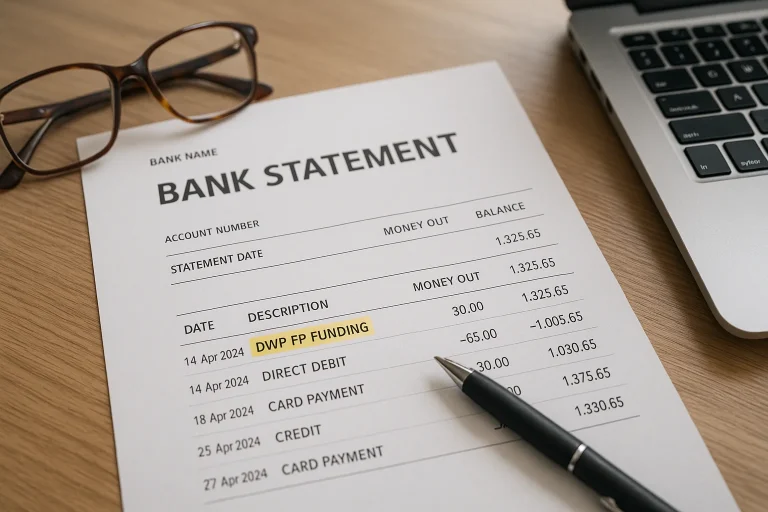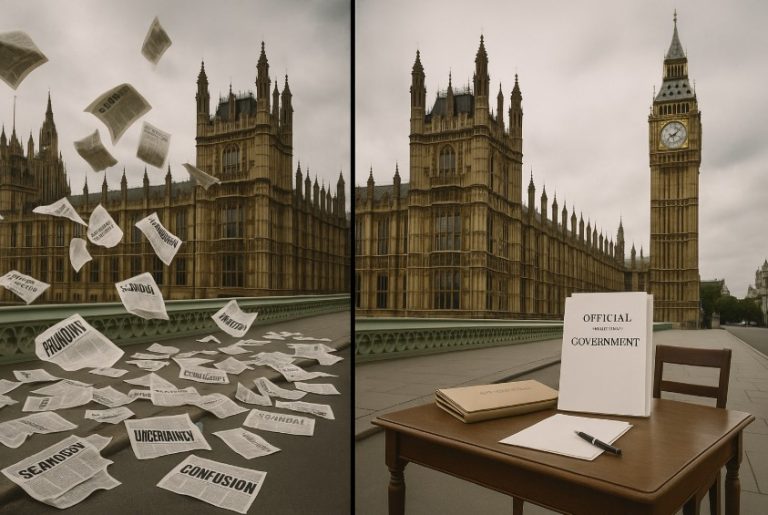The Blue Badge scheme plays a vital role in making daily travel easier for people with serious mobility challenges across the UK.
While many assume that holding a Blue Badge means free parking everywhere, the rules are more nuanced. Depending on location and the type of car park, charges may still apply.
This article explores where Blue Badge holders can and cannot park for free, what the law says, and how to use the badge correctly to avoid penalties.
What Is The Blue Badge Scheme And Who Qualifies?
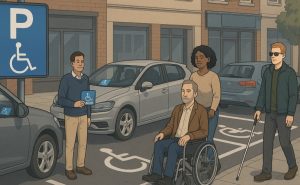
The Blue Badge scheme is a nationally recognised initiative that helps people with severe mobility difficulties access essential services by allowing them to park closer to their destination. It is intended for on-street parking use and provides various concessions for eligible individuals.
Eligibility for a Blue Badge generally includes:
- Individuals who receive the Higher Rate of the Mobility Component of Disability Living Allowance (DLA) or certain rates of Personal Independence Payment (PIP)
- People who have permanent and substantial difficulty walking
- Individuals who are registered blind
- Parents of children under three with medical conditions that require constant access to a vehicle
- Those with significant upper limb impairments that prevent them from using parking meters
Organisations that transport disabled people may also apply for an organisational badge. The scheme is designed for personal benefit, meaning that the badge should only be used when the eligible individual is present in the vehicle.
Where Can Blue Badge Holders Park For Free?
Blue Badge holders can benefit from several on-street parking concessions throughout the UK. These privileges make it easier for disabled individuals to access local amenities, medical services, and transport links.
Blue Badge holders are generally allowed to park for free at:
- On-street pay-and-display bays
- Parking meters
- Disabled bays marked with the wheelchair symbol
In addition, they are permitted to park on single or double yellow lines for up to three hours, as long as:
- There are no loading or unloading restrictions
- The Blue Badge and parking clock are both displayed clearly
- The parking clock is set to the time of arrival
These concessions may vary between locations, so it is essential to check local signage or contact the local authority for clarification.
Are Blue Badge Holders Required To Pay In Council Car Parks?

While the Blue Badge scheme is nationally recognised, each local authority is responsible for setting its own policies regarding council-owned car parks. As a result, some councils offer free parking to Blue Badge holders, while others charge standard fees.
It is essential for badge holders to:
- Check signage at the car park entrance
- Refer to the local authority’s website
- Follow any displayed time limits or registration requirements
The following table provides a comparison of how parking rules vary across selected local councils:
| Local Authority | Parking Fee for Badge Holders | Additional Notes |
| Nottingham City Council | Free | Unlimited in designated disabled bays |
| Liverpool City Council | Charged | Concessions not extended to all Blue Badge bays |
| Cardiff Council | Free | Time restrictions may apply |
| Sheffield City Council | Charged | Requires payment and display of valid ticket |
Given the variation in policies, Blue Badge holders are encouraged to confirm the rules with the local council before parking in any council-operated facility.
Do Blue Badge Holders Need To Pay In Private Car Parks?
Private car parks are not governed by the same rules as on-street parking, meaning they are not legally obliged to offer concessions to Blue Badge holders.
These car parks include facilities operated by supermarkets, shopping centres, hospitals, and retail parks.
While many of these establishments provide dedicated disabled bays, they may still:
- Charge for parking
- Require display of both the badge and a valid ticket
- Ask for registration at customer service desks
It is common for private car park operators to set their own terms and conditions. For this reason, badge holders must not assume parking is free, even if they are using a marked disabled bay.
Reading the posted signs and contacting staff where necessary is advised to avoid any penalties or misunderstandings.
Can Blue Badge Holders Park On Yellow Lines?
The Blue Badge scheme allows holders to park on single or double yellow lines for a limited duration, but there are specific conditions attached to this privilege.
Blue Badge holders may park on yellow lines for up to three hours if:
- There are no loading or unloading restrictions in place, indicated by yellow kerb dashes or signage
- The badge is displayed with the hologram visible
- The parking clock is set to show the time of arrival
It is important to note that this concession applies only to on-street parking. Parking on yellow lines in off-street locations such as shopping centres or private facilities is not permitted under the scheme.
There must be at least a one-hour gap between parking periods if returning to the same area on the same day. Failure to comply with these rules can lead to fines or other enforcement actions.
What Are The Penalties For Blue Badge Misuse?
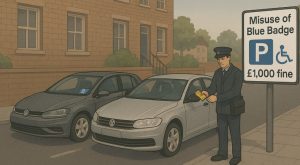
Misusing a Blue Badge is considered a criminal offence and can carry serious legal consequences. The badge is issued for the personal benefit of the individual it belongs to, and using it inappropriately undermines the integrity of the scheme.
Examples of misuse include:
- Allowing a friend or relative to use the badge when the holder is not present
- Using a copied, altered, or expired badge
- Displaying a badge when the holder is not being transported
The consequences of misuse may include:
- A fine of up to £1,000
- Confiscation of the badge
- Withdrawal of parking privileges
- Possible prosecution under fraud legislation
The badge remains the property of the issuing local council, and misuse may result in the council demanding its immediate return.
Awareness of proper use not only protects the badge holder but also preserves the scheme’s value for all eligible users.
How Can Drivers Find Blue Badge Parking Spaces?
Finding suitable parking can be challenging for those with mobility impairments, but several tools and resources can assist in locating designated Blue Badge spaces.
Options include:
- Local authority websites that publish maps of available disabled bays
- Navigation apps such as AccessAble and Blue Badge Parking
- Physical street signs displaying the international wheelchair symbol
Some councils provide downloadable PDFs or mobile-friendly maps showing accessible locations. These resources are especially helpful in unfamiliar towns or during travel.
Users should also be aware of additional conditions, such as time limits or permit-only zones, which may apply even in marked bays.
Are There Any Exceptions Or Regional Variations In The UK?
Although the Blue Badge scheme is part of a UK-wide initiative, its rules can vary between regions. Each of the UK’s nations, as well as certain metropolitan areas, may interpret or implement the scheme slightly differently.
For example:
- In Scotland, the scheme largely mirrors England’s rules, though individual councils may apply local interpretations
- In Wales, Blue Badge holders receive similar concessions, but signage and enforcement may differ
- In Northern Ireland, there is a separate application process and unique enforcement guidelines
London presents a unique case. Four central boroughs do not fully recognise the national Blue Badge scheme due to traffic management strategies. These boroughs are:
- City of Westminster
- Royal Borough of Kensington and Chelsea
- City of London
- London Borough of Camden (partially)
These areas may require residents or visitors to apply for local permits to access full parking benefits. A summary comparison is shown below:
| Region or Borough | National Blue Badge Accepted | Local Registration Required | Notes |
| Scotland | Yes | No | Similar to England; check council sites |
| Northern Ireland | Yes | No | Separate application process |
| City of Westminster | Partially | Yes | Local access scheme needed |
| Royal Borough of Kensington & Chelsea | Partially | Yes | Own permit scheme applies |
| London Borough of Camden (central) | Partially | Yes | Rules vary within zones |
It is advisable to check with each region or borough in advance, particularly when visiting densely populated or high-restriction zones.
What Documents Should Blue Badge Holders Display While Parking?
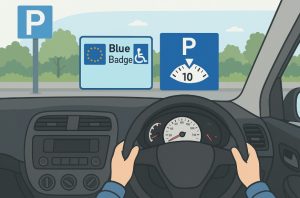
Proper display of the Blue Badge and parking clock is essential to avoid fines or disputes. The badge must be clearly visible through the front windscreen, placed on the dashboard or facia panel, with the hologram side facing up.
Key display guidelines include:
- Ensure the badge is legible and not faded
- Do not display the photo side
- Replace worn or damaged badges through your local council
- Use the parking clock where required, especially on yellow lines or in time-limited bays
Blind users or those with vision impairments should ensure a companion understands how to correctly position both the badge and clock. Incorrect display may result in a Penalty Charge Notice, even if the user is otherwise entitled to park.
How Does The Blue Badge Scheme Support Disabled Drivers In The UK?
The Blue Badge scheme significantly improves mobility for disabled individuals by providing easier access to public services, shopping areas, and community spaces.
It enhances independence by reducing the physical barriers associated with parking in standard bays.
Key benefits include:
- Reduced walking distances to buildings and services
- Access to priority parking spaces
- Ability to park in locations not typically permitted for other drivers
- Greater opportunity for social, medical, and employment engagement
By facilitating more accessible travel, the scheme plays an essential role in supporting equality and inclusion for disabled people across the UK. However, to maintain the system’s integrity, all users must follow the rules and use the badge responsibly.
Conclusion
Understanding where and how the Blue Badge can be used is essential for avoiding fines and making the most of the parking concessions available.
While many on-street locations offer free parking, council and private car parks often have their own rules.
By following the proper display requirements and checking local regulations, badge holders can benefit from greater mobility and independence.
The key is to stay informed and use the badge responsibly to ensure continued access for those who truly need it.
FAQs
Do all councils in the UK allow free parking for Blue Badge holders?
No, each local authority sets its own rules for council car parks. Always check signs or contact the council.
Can you park anywhere with a Blue Badge in London?
Not everywhere. Central London boroughs have specific local schemes that may restrict or modify Blue Badge use.
Is a Blue Badge valid in private retail parks?
It depends on the private operator. Many offer accessible spaces but may charge for parking.
How long can Blue Badge holders park on yellow lines?
Up to three hours, provided there are no loading restrictions and a parking clock is displayed.
Can a family member use a Blue Badge without the holder?
No. The badge is strictly for use when the holder is present in the vehicle. Misuse can result in fines.
What should I do if my badge becomes unreadable or damaged?
You must return it to your local council for replacement to avoid fines or enforcement.
Are Blue Badge rules consistent across the UK?
There are slight differences in rules and enforcement between England, Scotland, Wales, and Northern Ireland.


